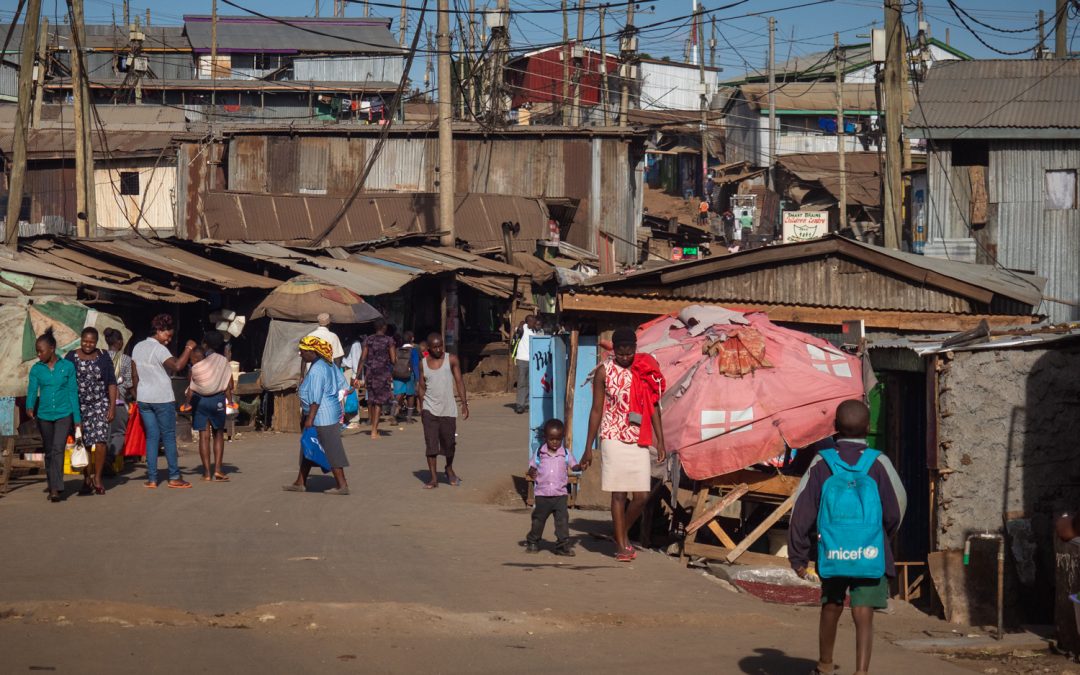The Roots of Desperation
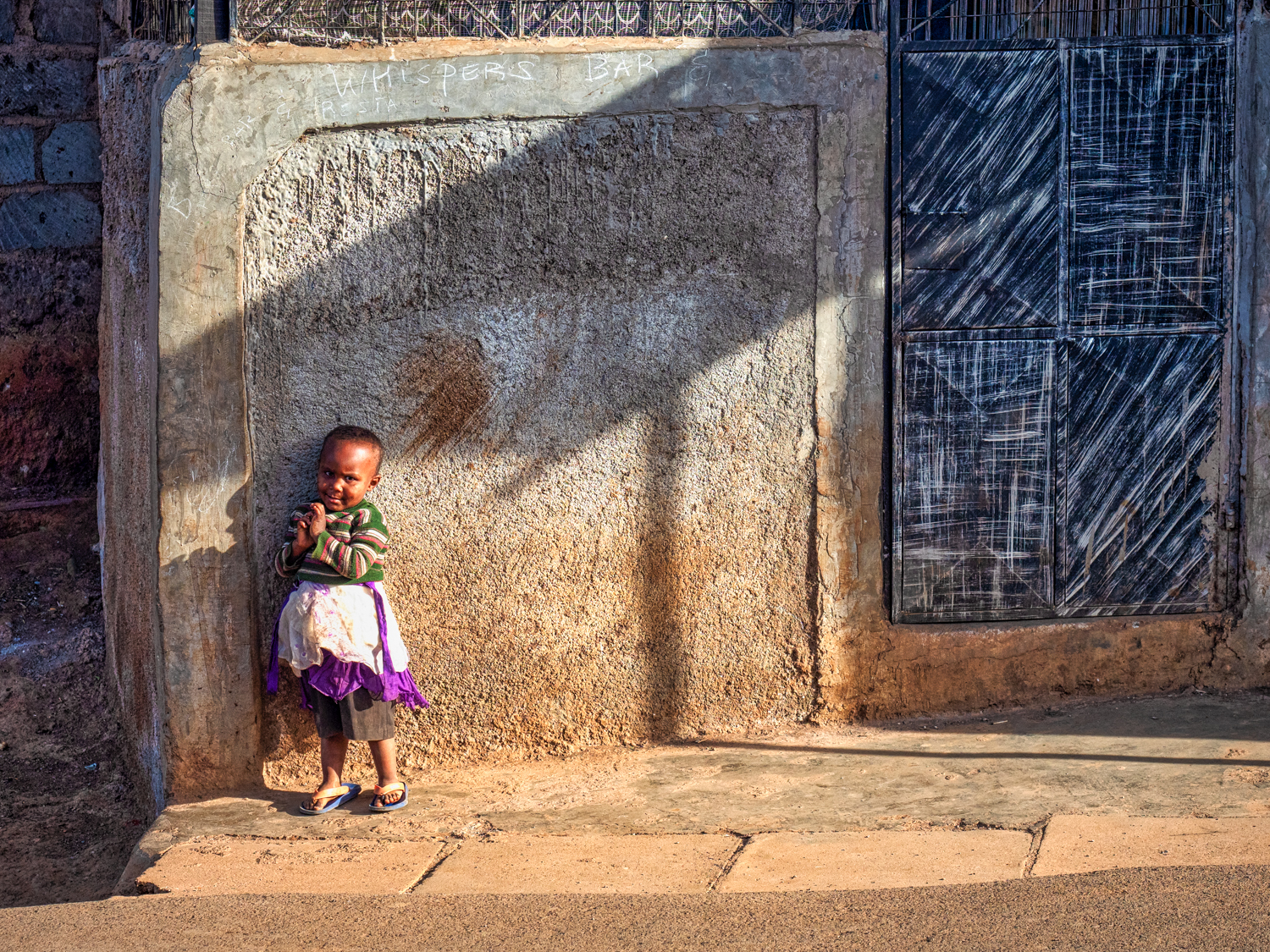
The city of Nairobi is home to Kibera, the largest urban slum on the continent of Africa, and the third largest in the world. The average American visiting Kibera will be most immediately struck by two things: One is the sheer depth of poverty; the other is the massiveness of the place. I belong to the school of thought that human empathy is baked into our DNA, but the ability to perceive need or suffering does not scale to large populations. Our brains don’t know how to connect with others by the hundreds of thousands. So frankly, I find it is difficult to feel anything walking the streets of Kibera, except a sort of numb shock and fixation. It’s just difficult to comprehend.
But what is easy to notice are the familiar things – the human things. People hustling to make a living, getting things done, friends chatting, children playing and laughing. It all feels sort of normal and okay in that sense. There are hopeful things, innovative things, funny things, sad and troubling things. But again, it’s hard to know what to think and hard to tell what you feel. We are not built for this.
Why We Were There
As mentioned in this post, Steve Disenhof and I travelled to Kenya to photograph and tell stories about the students at the Daraja Academy. One of those students, Irene Kazirika Asuza, came from Kibera. Asuza, as we know her, is an aspiring videographer and a very bright and friendly young woman. We profiled her for the Daraja Photography Project, and she was gracious enough to bring us to her home in Kibera, introduce us to her mother, and talk with us on camera about her experience at Daraja. Asuza is one of the lucky ones. She entered her final year of primary school with no prospect for continuing her education due to her family’s economic circumstances. But her intelligence, work ethic, and desire to make something out of her life won her acceptance at Daraja Academy. And the rest is history.
Asuza and young women like her are an inspiration and a study in hope for a brighter future. As I walk through the streets of Kibera, I wish, of course, that there could be more stories like hers. There are so many bright people who just need a glimmer of opportunity. I am struck many times by the knowledge that I and all my fellow Americans had the gift of education bestowed upon us as a birth right. As such, most of us took it for granted. A short time in just about any African country will teach you that education is valued beyond anything else, and virtually any child would be delighted beyond measure if they had what most American children accept begrudgingly. I don’t see this as an indictment of American culture, but I do wish every American child could receive the object lesson which is on offer via a simple walk in the streets of Kibera.
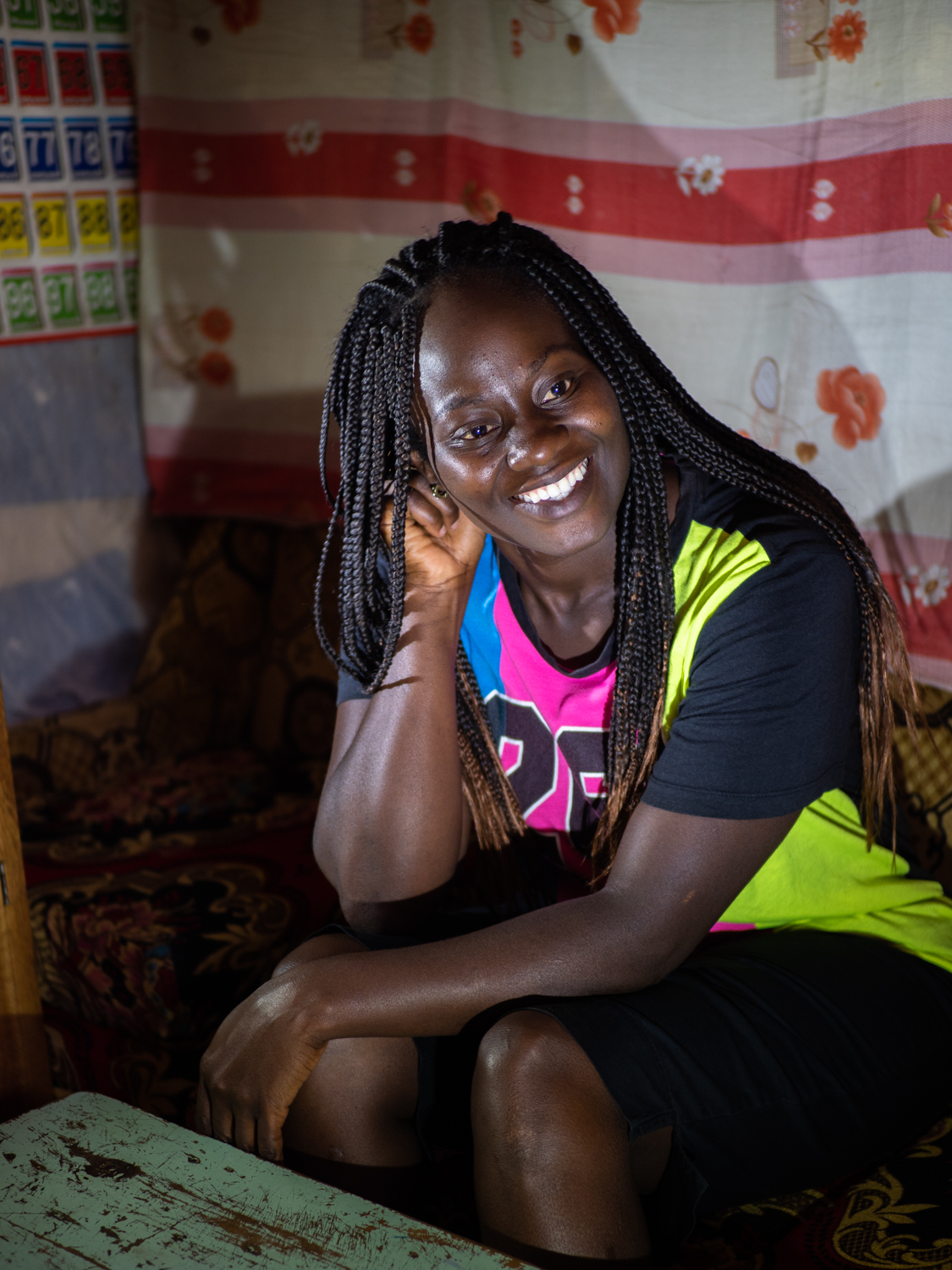
Asuza at home during our interview.
Production – Shooting in Kibera
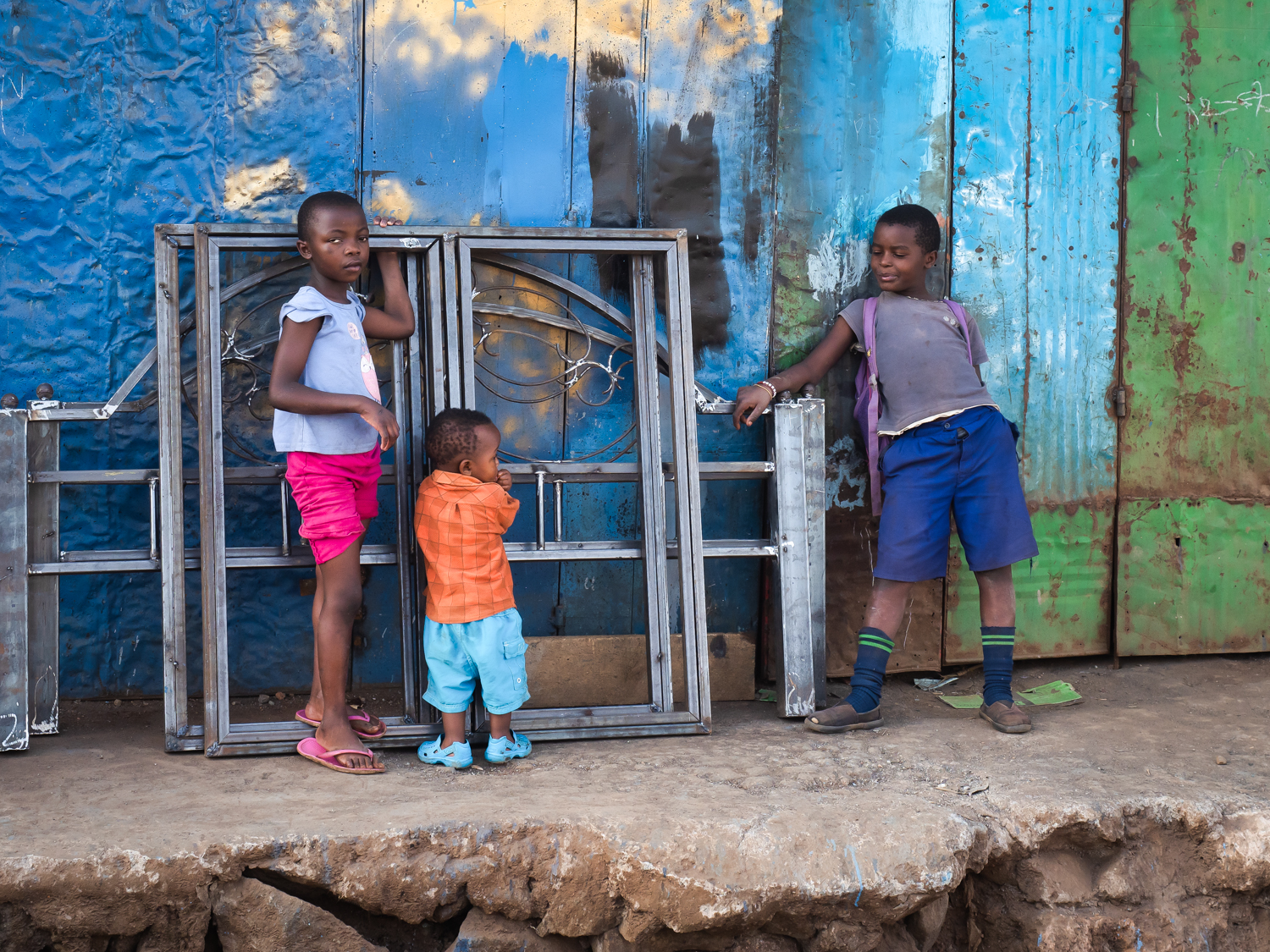
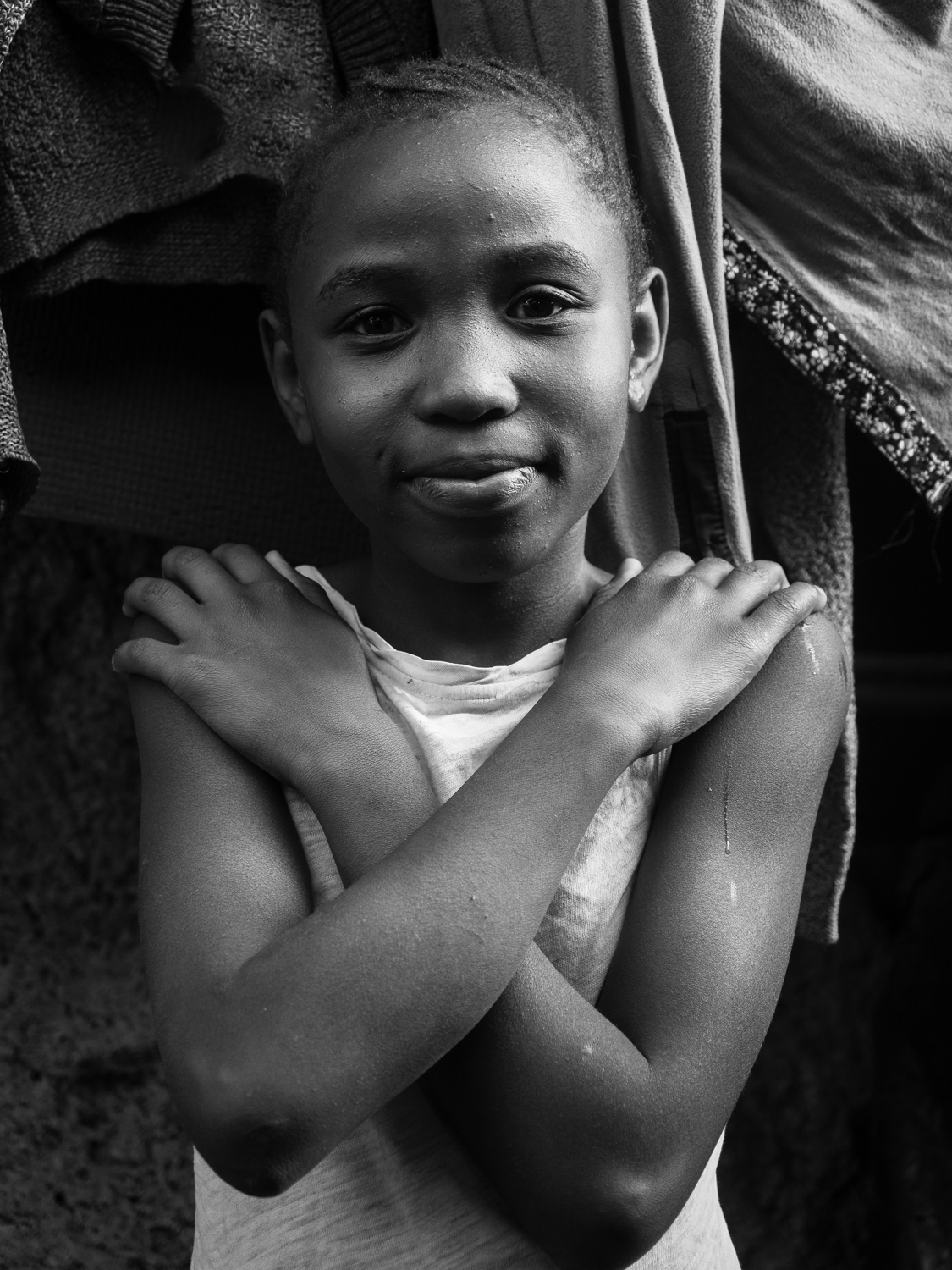
Besides being a willing, gracious, and welcoming subject, Asuza was also our guide. This was true in a very literal sense, because the distance we walked and the labyrinthine alleyways we traversed left us with no sense of where we were. We could have been lost in there for days. But it was also true in a deeper sense. To be there with Asuza was a privilege. We were invited guests, and not just voyeuristic interlopers.
The task at hand was to tell Asuza’s story via images and video. This would come partly in her own words as we interviewed her on camera. That part was challenging from a production standpoint, but otherwise a straightforward task. Because we had a long walk in and didn’t want to attract too much attention, Steve and I brought minimal gear – just our cameras, small travel tripods, and some super-compact lighting gear. We each brought two Lume Cubes, which are very bright and very small LED lights. We also had a couple of mini-tripods to mount them. So once we reached Asuza’s home, we could shoot inside under very tough lighting conditions and still have adequate light.
But part of this story was also the environment itself. We needed to convey a sense of day to day life in Kibera, because this is what Asuza’s life was like before she was accepted to Daraja Academy. And this part is the essence of what Daraja represents – the chance to elevate yourself beyond such circumstances. Steve and I both struggled with how we would photograph this aspect of the experience. There is a history of backlash against photographers in Kibera, so there is some concern about offending the residents or even precipitating potentially violent confrontations. For my part, I felt the right decision was to embrace the risk in order to convey the emotional resonance of life in Kibera. So I went into full street-photographer mode, putting me in my happy place creatively, but perhaps in a dangerous place as well. Steve was a bit more cautious, and probably a bit more wise, than me. But between us, the work we produced seems to carry the weight of the story we needed to tell. So…mission accomplished from our point of view. You can see these images in our social media feeds. So let us know if you agree.
As we were leaving Kibera, I was chatting with Asuza about her aspirations to become a professional videographer and a film director someday. It occurred to me that as a storyteller on behalf of Kibera, I was a very poor substitute for her. I look forward to the day when she has the opportunity to tell the million and one stories of her home, and her life. It’s not an easy path from here to there…but she believes she can do it. And after all the Daraja girls I’ve met, who am I to doubt it?

